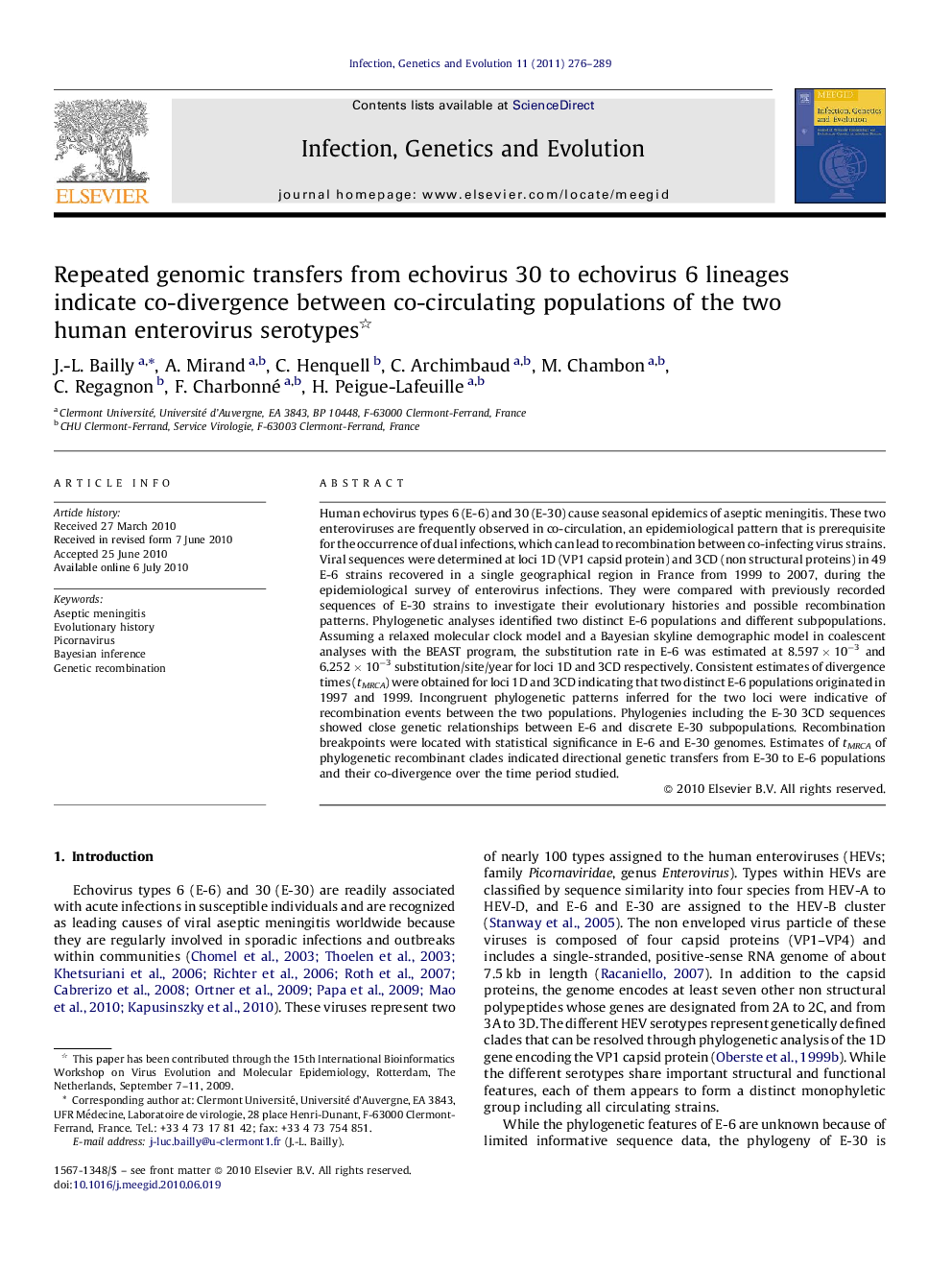| Article ID | Journal | Published Year | Pages | File Type |
|---|---|---|---|---|
| 5911845 | Infection, Genetics and Evolution | 2011 | 14 Pages |
Abstract
Human echovirus types 6 (E-6) and 30 (E-30) cause seasonal epidemics of aseptic meningitis. These two enteroviruses are frequently observed in co-circulation, an epidemiological pattern that is prerequisite for the occurrence of dual infections, which can lead to recombination between co-infecting virus strains. Viral sequences were determined at loci 1D (VP1 capsid protein) and 3CD (non structural proteins) in 49 E-6 strains recovered in a single geographical region in France from 1999 to 2007, during the epidemiological survey of enterovirus infections. They were compared with previously recorded sequences of E-30 strains to investigate their evolutionary histories and possible recombination patterns. Phylogenetic analyses identified two distinct E-6 populations and different subpopulations. Assuming a relaxed molecular clock model and a Bayesian skyline demographic model in coalescent analyses with the BEAST program, the substitution rate in E-6 was estimated at 8.597Â ÃÂ 10â3 and 6.252Â ÃÂ 10â3 substitution/site/year for loci 1D and 3CD respectively. Consistent estimates of divergence times (tMRCA) were obtained for loci 1D and 3CD indicating that two distinct E-6 populations originated in 1997 and 1999. Incongruent phylogenetic patterns inferred for the two loci were indicative of recombination events between the two populations. Phylogenies including the E-30 3CD sequences showed close genetic relationships between E-6 and discrete E-30 subpopulations. Recombination breakpoints were located with statistical significance in E-6 and E-30 genomes. Estimates of tMRCA of phylogenetic recombinant clades indicated directional genetic transfers from E-30 to E-6 populations and their co-divergence over the time period studied.
Related Topics
Life Sciences
Agricultural and Biological Sciences
Ecology, Evolution, Behavior and Systematics
Authors
J.-L. Bailly, A. Mirand, C. Henquell, C. Archimbaud, M. Chambon, C. Regagnon, F. Charbonné, H. Peigue-Lafeuille,
